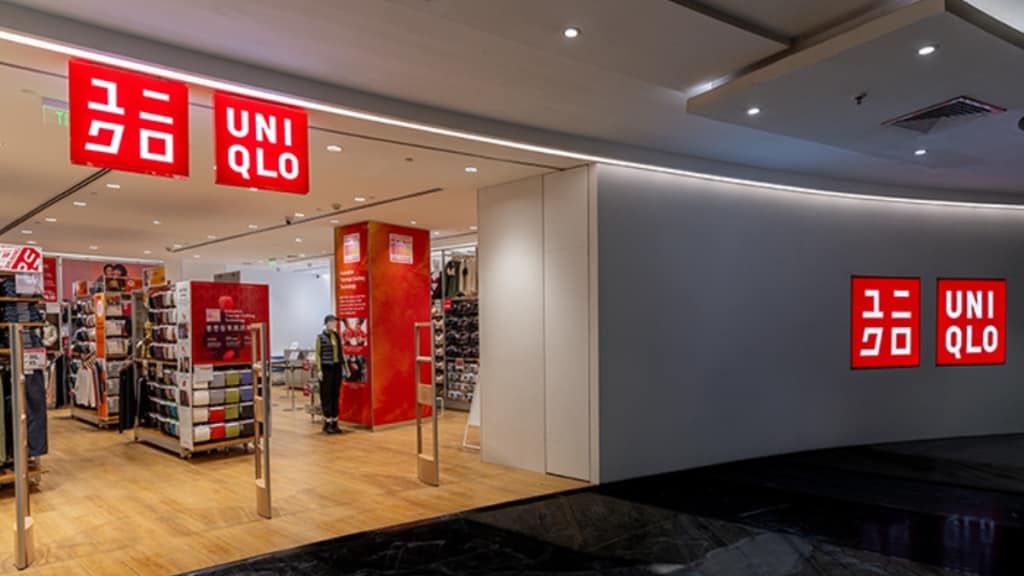Being fast is not Uniqlo’s strong suit. But in India it is racing against time. After two false starts – first it postponed its India entry in 2017 citing lack of good retail space and then it had to yellow light its roll out plan in 2019 as the Covid pandemic brought everything to an abrupt halt — the Japanese fashion retailer is ready to step on the gas.
The reason is not far to seek. After four years of entering India and with 12 stores in the country, Fast Retailing’s Uniqlo brand has seen a 60% jump in sales in India. According to filings with the corporate affairs ministry, it posted Rs 68.3 crore in profit for the year ended March 31, 2023, on revenue of Rs 624 crore.
It is equally a fact that Uniqlo has been a late entrant in the world’s most populous country, having opened its first India store almost a decade after the entry of many of its global competitors who have already built a retail network that spans the country. Meanwhile, Uniqlo remains confined largely to the north (seven stores in the Delhi NCR region, one store each in Chandigarh, Lucknow, Zirakpur, and the recently inaugurated two in Mumbai).
To make up ground, it is scouting for more manufacturing partners to scale up production rapidly. It is also looking at the markets of the south as the next possible destination. Tomohiko Sei, CEO, Uniqlo India, says, the brand has seen “positive and good demand” coming from the south via its e-commerce channel. “We are open to exploring opportunities in non-metro cities as well. If there is growing demand from tier-II and III cities, we are certainly willing to expand into those regions,” he adds. Can Uniqlo make deeper inroads into India?
Crossing the hurdles
According to Statista, the apparel market in India is projected to grow by 3.85% between 2023 and 2028, resulting in a market volume of $122.50 bn in 2028. The middle-class consumers (who form 43% of the total targetable customers and contribute about 55-60% share of the total apparel market revenue) spend relatively higher amounts than the aspirational consumers on discretionary apparel consumption.
They seek quality and design at the best price, creating an opportunity that needs to be captured with “economy and value fashion”, say experts. As a result, the mid-to-value segment has grown phenomenally well. Zudio, for example, is clocking about Rs 2.5 crore in sales per month from its 7,000-8,000 sq ft stores, in some locations. That has prompted many other fashion houses to position brands in the same segment. For instance, Apparel Group has brought R&B to India, Shoppers Stop has launched Intune, and Pantaloons has launched Style Up.
In short, while the mid-to-value segment is doing exceptionally well, those in the Zara price bracket have become the go-to brands in the premium segment. “How do you get the fashion-conscious customer to agree to a price point that is premium for a basics brand is the dilemma for Uniqlo,” says Pankaj Renjhen, COO & Jt. MD, Anarock Retail.
That means Uniqlo has two big obstacles to clear. First, in terms of pricing, it is still premium for a basic clothing brand in India. Local competitors like Zudio are more affordable and offer a larger offering; and global brands like M&S are well-entrenched, even in tier-II markets. The other issue is with its offerings in the country. Its biggest product offering is winterwear, for which the uptake in the markets of the south and the west is going to be limited, say analysts. Real estate will not be so easy to procure in tier-II markets, as the retail boom is driving prices up in those markets, they add.
Uniqlo has started tweaking its plans already. Analysts say it has reduced the store sizes significantly — starting with huge 25,000-30,000 sq ft stores, it is down to 10,000-15,000 square ft. To grab eyeballs, it has recently onboarded its first-ever ambassador in India, Katrina Kaif, and unveiled a 360-degree marketing campaign.
The brand is also beefing up its e-commerce play directing 50% of its investments into digital media. “The emphasis on digital engagement helps us stay at the top of the customers’ awareness and preferences,” says Nidhi Rastogi, marketing director at Uniqlo India.
Look before you leap
Key challenges for Uniqlo
Consumers may not agree with Uniqlo’s price point as it has a basic design and portfolio
There’s intense competition from mid-to-value segment players like Zudio and Westside
Its focus on winterwear will be a challenge while expanding in the western and southern markets in the country


